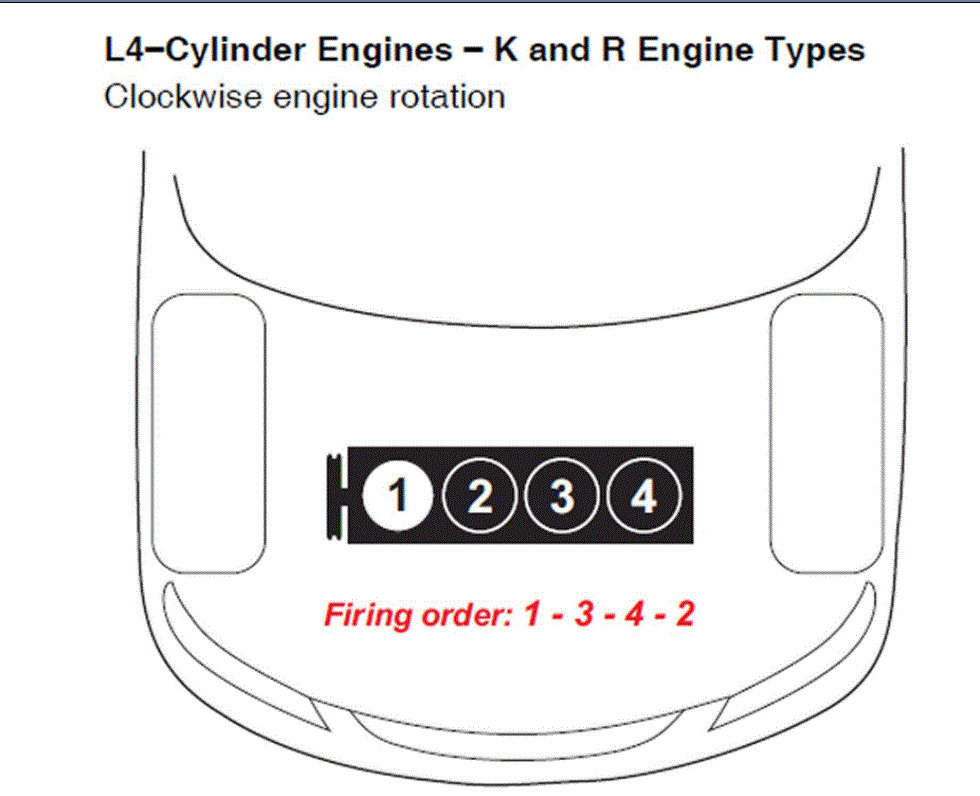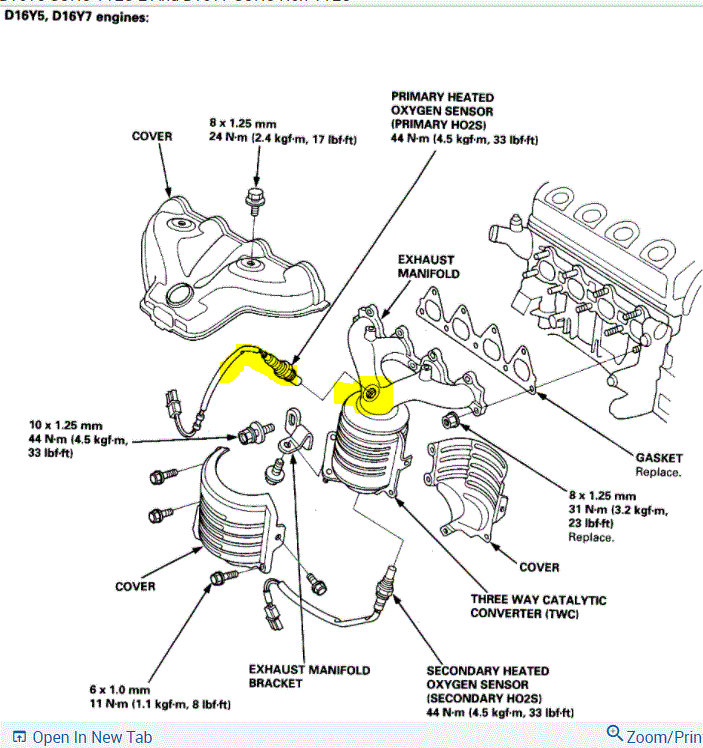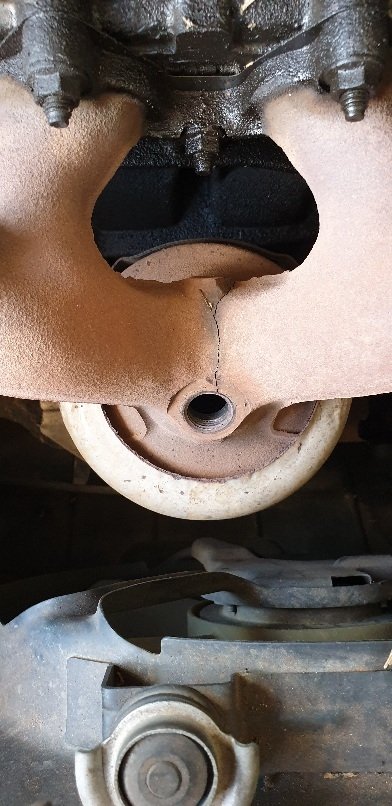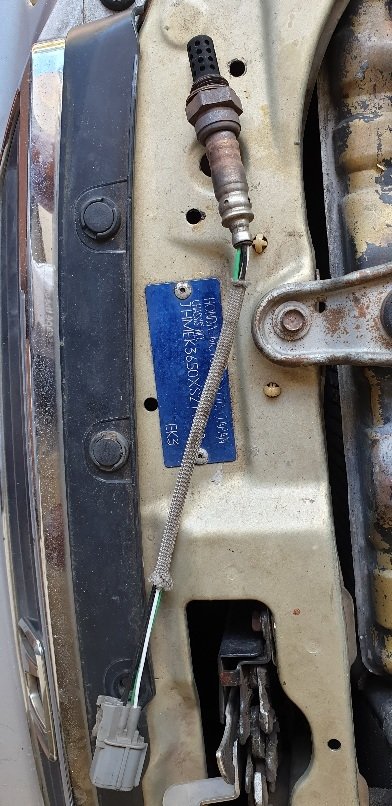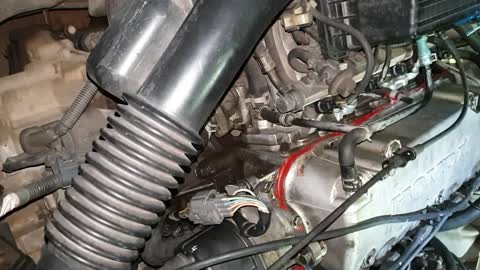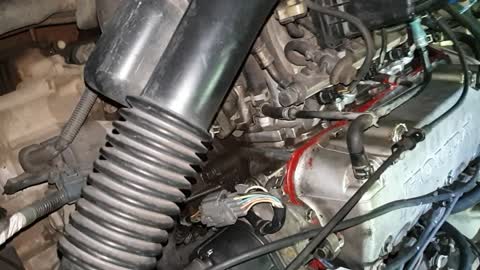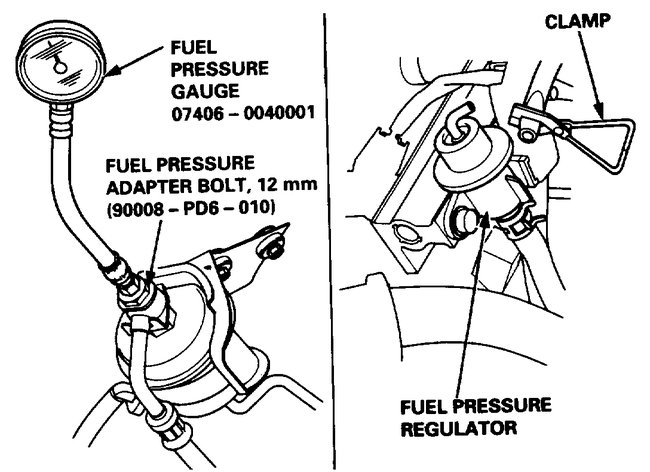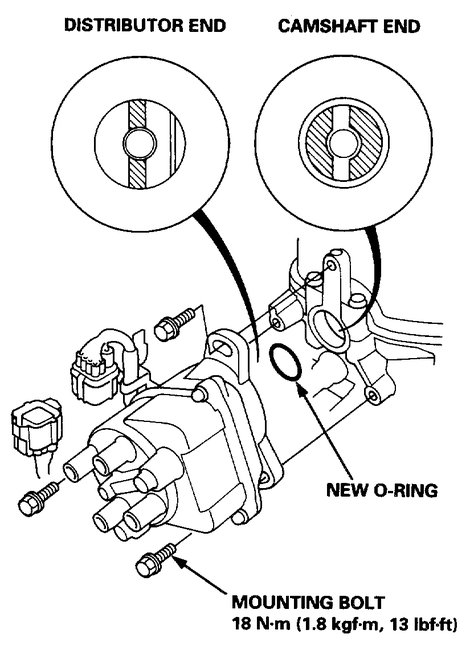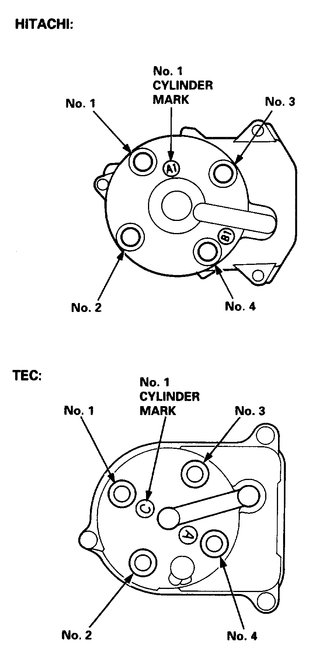Hi,
First, here is a link that gives a general overview of testing/how to check fuel pressure:
https://www.2carpros.com/articles/how-to-check-fuel-system-pressure-and-regulator
____________________
Here are the directions specific to your vehicle for testing pressure. The specifications are included in the directions. Try this and let me know what you find or if you have other questions.
1999 Honda Civic DX Sedan L4-1590cc 1.6L SOHC MFI
Component Tests and General Diagnostics
Vehicle Powertrain Management Fuel Delivery and Air Induction Fuel Pump Fuel Pressure Testing and Inspection Component Tests and General Diagnostics
COMPONENT TESTS AND GENERAL DIAGNOSTICS
Inspection
1. Relieve fuel pressure.
pic 1
2. Remove the 12 mm banjo bolt from the fuel filter while holding the fuel filter with another wrench. Attach the special tools.
3. Start the engine. Measure the fuel pressure with the engine idling and the vacuum hose of the fuel pressure regulator disconnected from the fuel pressure regulator and pinched. If the engine will not start, turn the ignition switch ON (II), wait for two seconds, turn it off, then back on again and read the fuel pressure.
Pressure should be: except B16A2 engine:
260 - 310 kPa (2.7 - 3.2 kg/Sq.cm, 38 - 46 psi)
B16A2 engine: 270 - 320 kPa (2.8 - 3.3 kg/Sq.cm, 40 - 47 psi)
4. Reconnect vacuum hose to the fuel pressure regulator.
Pressure should be: except B16A2 engine:
200-250 kPa (2.0 - 2.5 kg/Sq.cm, 28 - 36 psi)
B16A2 engine: 210 - 260 kPa (2.1 - 2.6 kg/Sq.cm, 30 - 37 psi)
If the fuel pressure is not as specified, first check the fuel pump. If the fuel pump is OK, check the following:
- If the fuel pressure is higher than specified, inspect for:
- Pinched or clogged fuel return hose or line.
- Faulty fuel pressure regulator.
- If the fuel pressure is lower than specified, inspect for:
- Clogged fuel filter.
- Faulty fuel pressure regulator.
- Fuel line leakage.
_________________________________
You will need a fuel pressure gauge to do this. Most parts stores will lend one to you. Also, did this problem start all at once? The engine is cranking really fast. If we find the fuel pressure is good, we may need to engine compression.
Also, after trying to start it, pull a couple of spark plugs, and see if they are wet.
Let me know
Joe
Image (Click to make bigger)
Tuesday, December 8th, 2020 AT 12:51 PM
